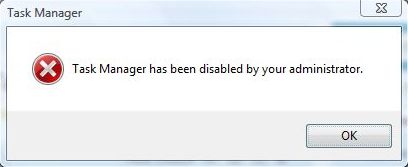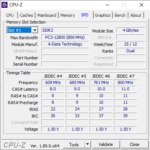Task Manager is a versatile task management and system utility in Windows operating system. With Task Manager, user can view detailed information about computer performance (CPU usage, physical memory, kernel memory, handle, thread, commit charge, etc.), running applications, processes, network activity and statistics, logged-on users, and system services. Besides system information, Task Manager can also be used to set process priorities, processor affinity, forcibly terminate processes, and shut down, restart, hibernate or log off from Windows.
In view of its powerful capabilities and functionality, administrator may want to disable Task Manager in the computer to disallow user from running Task Manager, although administrator also needs to restrict user access to Registry Editor or ability to change system registry for the control to be useful. On the other hand, some users may be wondering why the Task Manager has been disabled and cannot be run, which often caused by intelligent malware and Trojan to prevent users from terminating the malicious process. In any way, disable or enable Task Manager can be done by just a simple registry change.
How to Disable Task Manager
- Click Start -> Run, and then type regedit to run Registry Editor, then press Enter.
In Windows Vista, Windows 7, Windows 8, Windows 8.1, Windows 10 or later, you can also just type regedit in Start Search, and press Enter.
- Navigate to the following registry key:
To block Task Manager from current logged on user:
HKEY_CURRENT_USER\Software\Microsoft\Windows\CurrentVersion\Policies\SystemTo block Task Manager on local computer for all users:
HKEY_LOCAL_MACHINE\SOFTWARE\Microsoft\Windows\CurrentVersion\Policies\SystemNoteif “System” does not exist, simply create a new key by right clicking on Policies, and select New -> Key, and name the new folder as System. - Right click System registry key, and then select New -> DWORD (32-bit) Value.
- Name the new registry entry as DisableTaskMgr.
- Double click on DisableTaskMgr, and assign its value data as 1.
- Quit Registry Editor.
With immediate effect, user can no longer run or open Task Manager. Any attempt to run “taskmgr.exe” or using Ctrl+Shift+Esc or Ctrl-Alt-Del (via Windows Security dialog) key combination will has the error message saying “Task Manager has been disabled by your administrator”.
Beside, the Task Manager item in right click context menu is grayed out and disabled when user right click on Taskbar.
How to Enable Task Manager
- Click Start -> Run, and then type regedit to open Registry Editor, then press Enter.
In Windows Vista, Windows 7, Windows 8, Windows 8.1, Windows 10 or later, you can also just type regedit in Start Search, and press Enter.
- Navigate to the following registry key:
HKEY_CURRENT_USER\Software\Microsoft\Windows\CurrentVersion\Policies\System
- Locate DisableTaskMgr in the right pane.
- If found, right click on DisableTaskMgr, and select Delete to remove the registry entry, or set its value data to 0.
- Then navigate to the following registry key:
HKEY_LOCAL_MACHINE\SOFTWARE\Microsoft\Windows\CurrentVersion\Policies\System
- Locate DisableTaskMgr in the right pane.
- If found, right click on DisableTaskMgr, and select Delete to remove the registry entry, or set its value data to 0.
- Quit Registry Editor.
Task Manager is now available. The hack or trick works in most Windows operating system, including Windows 10, Windows 8.1, Windows 8, Windows 7 Windows Vista, Windows XP, Windows Server 2016 (R2), Windows Server 2012 (R2), Windows Server 2008 (R2) and Windows Server 2003.








